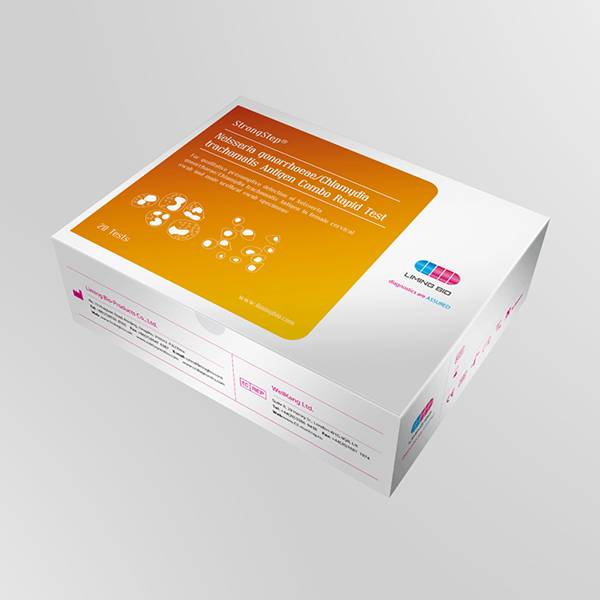Neisseria gonorrhoeae/Chlamydia trachomatis Antigen Combo Rapid Test


INTRODUCTION
Gonorrhea is a sexually transmitted disease caused by the bacterium Neisseria gonorrhoeae. Gonorrhea is one of the most common infectious bacterial diseases and is most frequently transmitted during sexual intercourse, including vaginal, oral and anal sex. The causative organism can infect the throat, producing a severe sore throat. It can infect the anus and rectum, producing d condition called proctitis. With females, it can infect the vagina, causing irritation with drainage (vaginitis). Infection of the urethra may caus urethritis with burning, painful urination, and a discharge. When women have symptoms, they often note vaginal discharge, increased urinary frequency, and urinary discomfort. But there are 5%-20% of men and 60% of women patient that do not show any symptoms. Spread of the organism to the fallopian tubes and abdomen may cause severe low«f-abdominal pain and fever. The average incubation for Gonorrhea is approximately 2 to 5 days following sexual contact with an infected partner. However, symptoms may appear as late as 2 weeks. A preliminary diagnosis of Gonorrhea can be made at the time of examination. In women. Gonorrhea is a common cause of pelvic inflammatory disease (PID). PID can lead to internal abscesses and long-lasting, chronic pelvic pain. PID can damage the fallopian tubes enough to cause infertility or increase the risk of ectopic pregnancy.
The genus Chlamydia includes three species: Chlamydio trachomatis, Chbmydiapneumoniae, a primarily human pathogen.and Chlamydia psittasi, primarily animal pathogen. Chlamydia trachomatis comprise 15 known serovars, is associated with trachomatis and genitourinary infection, and three serovars are associated with lymphogranuloma venereum (LGV). Chlamydia trachomatis infections is one of the most common sexually transmitted diseases. Approximately 4 million new cases occur each year in the United States, primarily cervicitis and nongonococcal urethritis. This organism also causes conjunctivitis, and infant pneumonia. Chlamydia trachomatis infection has both a high prevalence and asymtomatic carriage rate, with frequent serious complications in both women and neonates. Complications of Chlamydia infection in women include cervictis, urethritis, endometritis, pelvic inflammatory diseases (PID) and increased incidence of ectopic pregnancy and infertility. Vertical transmission of the disease during parturition from mother to neonate can result in inclusion conjunctivitis and pneumonia. In men at least 40% of the cases of nongonococcal urethritis are associated with Chlamydia infection. Approximately 70% of women with endocervical infections and up to 50% of men with urethral infections are asymptomaxic. Chlamydia psittasi infection is associated with respiratory disease in individuals exposed to infected birds and is not transmitted from human to human. Chlamydia pneumonia, first isolated in 1983, is associated with respiratory infections and pneumonia. Traditionally, Chlamydia infection has been diagnosed by the detection of Chlamydia inclusions in tissue culture cells. Culture method is the most sensitive and specific laboratory method, but it is labor intensive, expensive, long time (2-3 days) and not routinely available in most institutions. Direct tests such as immunofluorescence assay (IFA) require specialized equipment and a skilled operator to read the result.










